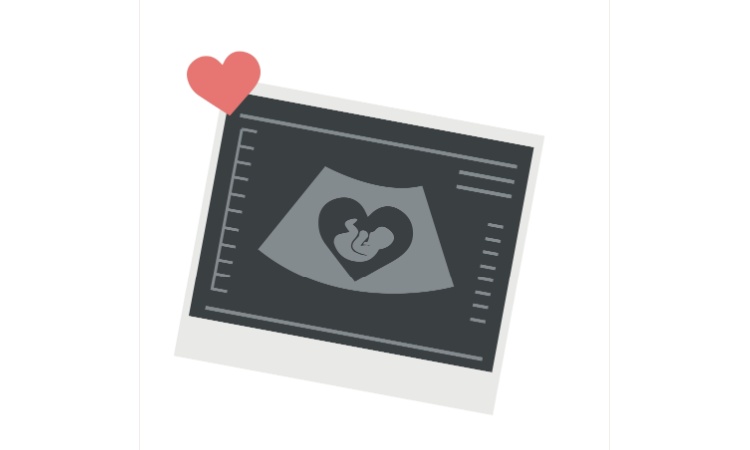Antenatal Scan Meaning, Types, and Importance
Antenatal Scan Meaning, Types, and Importance

Pregnancy is a special journey that comes with both excitement and responsibility. Expecting parents want the best care and assurance for their baby’s growth and well-being. One of the most important tools in modern prenatal care is the antenatal scan. These scans are non-invasive imaging tests that give doctors a clearer picture of the baby’s development, as well as the health of the mother’s womb and placenta. They are a standard part of medical care in pregnancy and help detect any abnormalities at an early stage.
What is an Antenatal Scan?
An antenatal scan is an imaging test, usually performed using ultrasound technology, that allows healthcare providers to monitor the baby’s growth and development. These scans can help identify the baby’s heartbeat, growth rate, and overall condition. They also provide vital information about the mother’s uterus and placenta.
Antenatal scans act as a window to the womb. They help you and your doctor check whether everything is progressing normally. Since pregnancy involves various changes and challenges, antenatal scans serve as a guide for safe and healthy delivery. Ensuring your health insurance covers maternity and prenatal care adds an extra layer of security.
Types of Antenatal Scans During Pregnancy
There are several types of antenatal scans done at different stages of pregnancy. Each scan has a specific purpose and provides unique insights into the baby’s development. Below are the most common types:
1. Early Pregnancy Scan (Dating Scan)
• Usually done between 6 to 10 weeks of gestation.
• Confirms pregnancy and estimates the due date.
• Detects the number of embryos (useful in case of twins or multiples).
• Confirms the location of the pregnancy (to rule out ectopic pregnancy).
2. Nuchal Translucency (NT) Scan
• Conducted between 11 to 14 weeks.
• Measures the fluid at the back of the baby’s neck.
• Helps assess the risk of chromosomal conditions such as Down syndrome.
3. Anomaly Scan (Mid-Pregnancy Scan)
• Performed between 18 to 22 weeks.
• Checks the baby’s organs, limbs, and spine.
• Detects any physical abnormalities.
• Examines the placenta and amniotic fluid levels.
4. Growth Scan
• Usually done in the third trimester.
• Monitors the baby’s size, weight, and overall growth.
• Ensures the baby is not too small or too large for the gestational age.
5. Doppler Scan
• Measures blood flow between the placenta and baby.
• Ensures that the baby is receiving enough oxygen and nutrients.
6. 3D/4D Scans
• Provide detailed, real-time images of the baby’s movements and facial features.
• Mostly optional and used for reassurance rather than medical necessity.
When are Antenatal Scans Done?
Antenatal scans are scheduled at specific stages of pregnancy to monitor important milestones in the baby's development. While the number of scans may vary depending on medical needs, the most common ones include:
• 6–10 weeks: Early pregnancy or dating scan.
• 11–14 weeks: Nuchal translucency scan.
• 18–22 weeks: Detailed anomaly scan.
• 28–32 weeks: Growth scan, if required.
Additional scans may be suggested if there are complications such as gestational diabetes, high blood pressure, or concerns about the baby’s growth. Your doctor will decide how many scans are necessary depending on your condition.
Why Antenatal Scans are Important for Mother and Baby
Antenatal scans are not just routine procedures; they are vital for ensuring the safety and health of both mother and child. Here’s why they matter:
1. Monitoring Baby’s Growth
• Tracks the baby’s weight and size.
• Helps ensure the baby is growing at a normal pace.
2. Detecting Abnormalities Early
• Identifies birth defects or chromosomal conditions.
• Allows for timely medical intervention if needed.
3. Checking Placental Position and Health
• Detects low-lying placenta (placenta praevia), which could complicate delivery.
• Ensures that the placenta is supplying enough nutrients and oxygen.
4. Ensuring Maternal Health
• Scans also monitor the uterus and amniotic fluid levels.
• Detects complications such as fibroids or infections.
5. Reassurance for Parents
• Seeing the baby on the screen provides parents with emotional connection and reassurance.
• Helps parents prepare mentally and emotionally for parenthood.
Conclusion
An antenatal scan is one of the most important tools in modern pregnancy care. From early pregnancy to delivery, these scans provide valuable information that ensures the safety and health of both mother and baby. They help track development, detect abnormalities, and guide doctors in making informed medical decisions. For expecting parents, antenatal scans also bring reassurance and joy.
Along with regular antenatal scans, financial preparedness is equally important during pregnancy. Medical expenses can add up quickly, and having a reliable health insurance plan with maternity benefits can ease the financial burden.
Family health insurance ensures that all family members are covered under a single plan.
Disclaimer: The above information is for illustrative purposes only. For more details, please refer to the policy wordings and prospectus before concluding the sales.
RELATED ARTICLES
TIFFA Scan Meaning and Its Role in Pregnancy
Normal Range for NT Scan at 12 Weeks Pregnant
What is Radiology? What's Its Role in Healthcare?
How To Claim Maternity Insurance: Step-by-Step Guide
Health Insurance Tips for Women Planning Maternity










 Health Insurance
Health Insurance  Travel Insurance
Travel Insurance  Car Insurance
Car Insurance  Cyber Insurance
Cyber Insurance  Critical Illness Insurance
Critical Illness Insurance
 Pet Insurance
Pet Insurance
 Bike/Two Wheeler Insurance
Bike/Two Wheeler Insurance  Home Insurance
Home Insurance  Third Party Vehicle Ins.
Third Party Vehicle Ins.  Tractor Insurance
Tractor Insurance  Goods Carrying Vehicle Ins.
Goods Carrying Vehicle Ins.  Passenger Carrying Vehicle Ins.
Passenger Carrying Vehicle Ins.  Compulsory Personal Accident Insurance
Compulsory Personal Accident Insurance  Travel Insurance
Travel Insurance  Rural
Rural 











